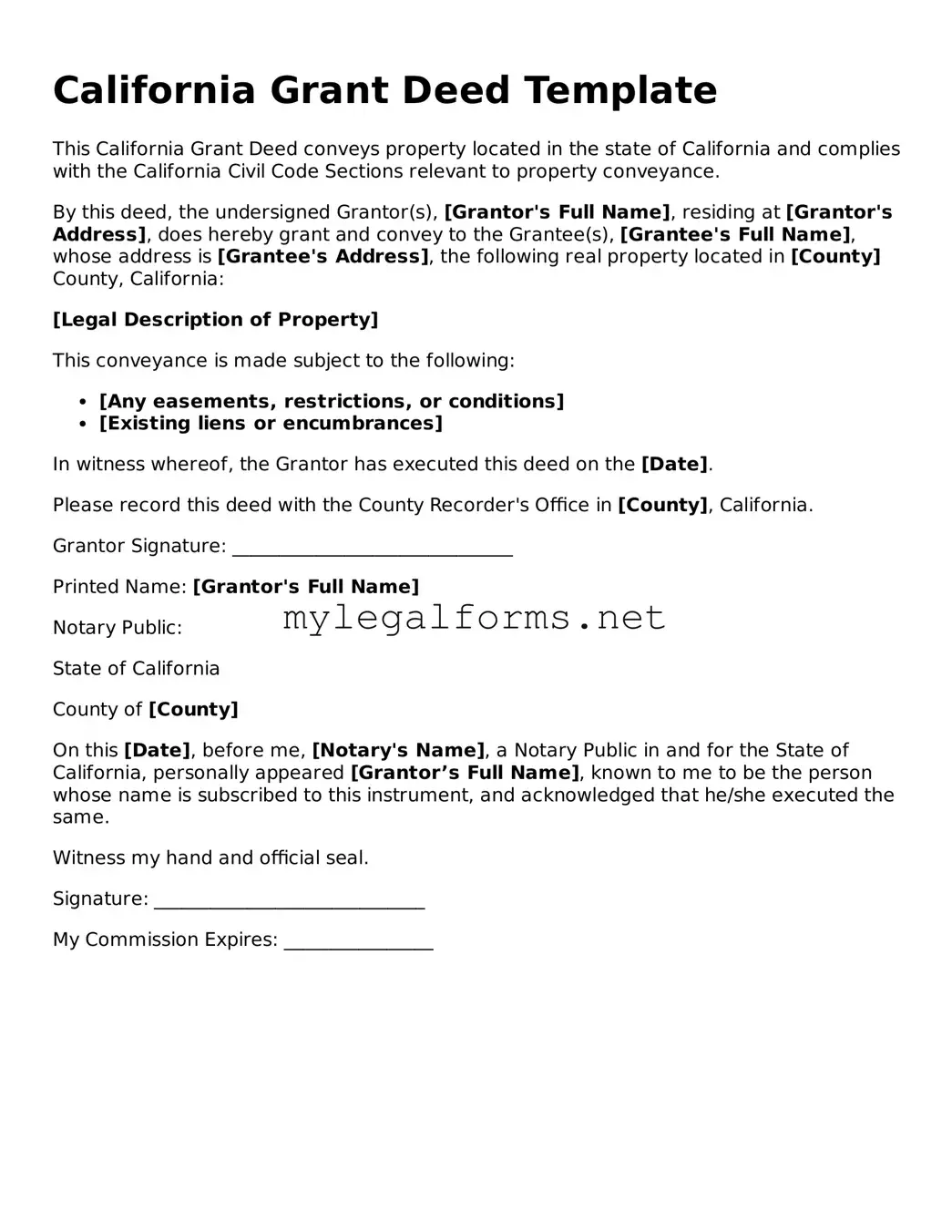California Grant Deed Template
This California Grant Deed conveys property located in the state of California and complies with the California Civil Code Sections relevant to property conveyance.
By this deed, the undersigned Grantor(s), [Grantor's Full Name], residing at [Grantor's Address], does hereby grant and convey to the Grantee(s), [Grantee's Full Name], whose address is [Grantee's Address], the following real property located in [County] County, California:
[Legal Description of Property]
This conveyance is made subject to the following:
- [Any easements, restrictions, or conditions]
- [Existing liens or encumbrances]
In witness whereof, the Grantor has executed this deed on the [Date].
Please record this deed with the County Recorder's Office in [County], California.
Grantor Signature: ______________________________
Printed Name: [Grantor's Full Name]
Notary Public:
State of California
County of [County]
On this [Date], before me, [Notary's Name], a Notary Public in and for the State of California, personally appeared [Grantor’s Full Name], known to me to be the person whose name is subscribed to this instrument, and acknowledged that he/she executed the same.
Witness my hand and official seal.
Signature: _____________________________
My Commission Expires: ________________
